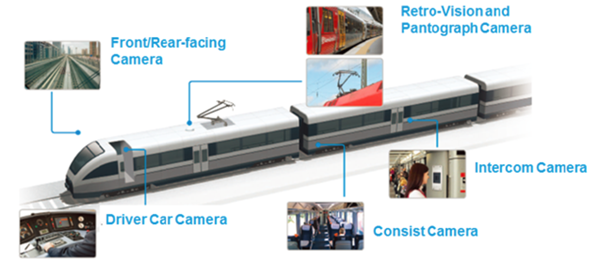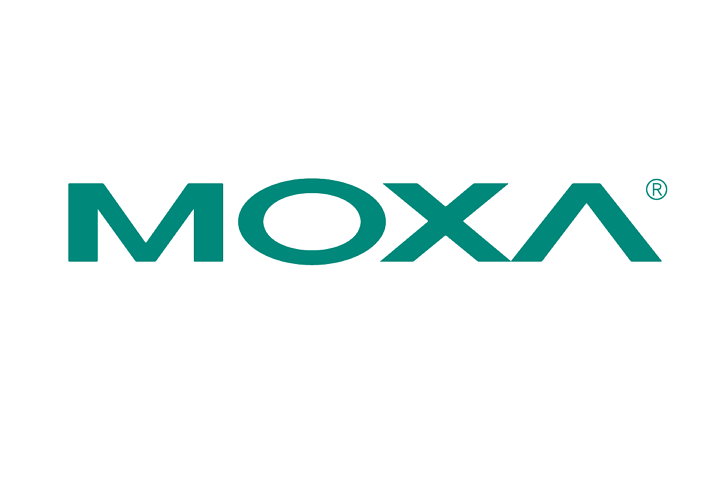The success of contemporary train monitoring systems heavily relies on IP-based closed-circuit television (CCTV) systems. Apart from ensuring passenger safety, these systems now offer critical data insights that enhance operational efficiency. The deployment of IP-based cameras and network video recorder (NVR) computing platforms is progressively expanding across railway infrastructure.
While IP-based CCTV technology has been in use for almost ten years, recent advancements have significantly improved its maturity, especially with the integration of high-performance cameras. The broader deployment of IP CCTV systems within railway infrastructure underlines the demand for enhanced designs and performance capabilities. The latest surveillance applications necessitate high reliability from IP CCTV cameras and the supporting network infrastructure. Furthermore, the cameras are now expected to transmit high-definition video streams under adverse environmental conditions. Many modern IP CCTV cameras operate on existing networks that may not fully meet the high-performance needs of these cameras. Solutions that can strengthen the Train-to-Ground (T2G) networks are highly sought after, as these networks optimize the functionality of next-generation high-performance IP CCTV cameras. This piece explores the obstacles encountered by railway operators and system integrators when implementing cutting-edge video surveillance capabilities in railway systems.
Varying Camera Placement and Day-and-Night Vision Capabilities
To leverage IP CCTV cameras to the fullest, railway operators need to enhance onboard camera coverage. IP cameras with diverse form factors, supporting various mounting requirements, and adaptable for deployment in multiple locations are crucial for comprehensive railway system coverage. Additionally, IP CCTV systems in railways should maintain consistent performance and deliver clear image quality in both bright and dim environments, irrespective of installation conditions and positions. They should also ensure high-quality rapid imaging in settings with rapidly changing light conditions, such as the seamless transition from light to dark environments when traversing tunnels.

Rugged IP Cameras for Hostile Onboard Environments
IP CCTV cameras for railway systems are often placed in environments characterized by extreme temperatures, humidity, vibration, or dust. Continuous monitoring of onboard conditions is essential for railway operators, even during train standbys in depots. Therefore, cameras must comply with EN 50155 T3 (-25 to 70°C) or TX (-40 to 70°C) temperature ratings. Cameras utilized in trains should also feature electromagnetic interference (EMI) and surge protection to ensure consistent performance and safeguard equipment from damage. Meeting the minimum electromagnetic compatibility requirements outlined in railway standards like EN 50121-3-2 or IEC 62232-3-2 is crucial. As some cameras are installed externally on trains, they should also support a de-misting function to ensure high-quality imaging in rainy and foggy conditions. Reliable disk access under substantial vibrations, as encountered in rolling stock, is imperative for NVR computers to maintain data integrity and prevent data loss.

The Digital Disparity
Constructing a robust and reliable communication network between swiftly moving trains and trackside stations remains a primary hurdle in modern rolling stock systems. These networks must deliver substantial bandwidth and availability to support CCTV, public address (PA), alarm, and control systems, all within the same network infrastructure. This must be achieved without significantly escalating the overall cost for train operators. For instance, automated train operation systems rely on wireless train-to-ground communications to enable direct control and management of onboard train activities from central control rooms.

Attaining peak performance on a rail network necessitates railway operators to retain a team of highly skilled IT networking professionals capable of optimizing the network for superior performance. However, this may not be a viable option for most operators, as networking expertise may not align with their core competencies. Furthermore, managing such a team would add to their operational expenses. Network equipment and systems featuring industrial auto-configuration capabilities offer significant advantages to operators, particularly those aiming to deploy network devices on a large scale. Intelligent technologies capable of automatically reconfiguring inter-consist network connections are highly valued, especially in scenarios involving train consist reorganizations.
Some ambitious operators are even contemplating offering onboard entertainment and internet connectivity to passengers during transit, intensifying the demand on the train-to-ground connection. To meet escalating requirements, wireless devices need to consistently deliver sufficient bandwidth to sustain a myriad of emerging applications reliant on train-to-ground communications. Fast and secure roaming with high throughput and millisecond-level handover times, as well as reliable networks facilitating seamless data exchange essential for secure onboard-ground operations, are the minimum network capabilities sought in a T2G network.
Integrating Products from Varied Vendors
Only a select few vendors offer comprehensive IP CCTV camera solutions tailor-made for railway systems. This presents system integrators and operators with the challenge of harmonizing these multi-vendor components into the underlying Ethernet network and synchronizing their operations to achieve optimal performance. Additionally, ensuring interoperability with existing systems poses a hurdle when modernizing train systems. Railway industry standards like EN 50155, IEC 62580-1, and IEC 60571 define the requisite product standards for train systems, with a particular emphasis on rolling stock requirements. Products complying with these industry standards and featuring user-friendly industrial auto-configuration technology will greatly reduce configuration time, expenses, and potential operational errors, ensuring a reliable and efficient system.
Comprehensive Compliance with EN 50155 for Rolling Stock
Moxa offers a comprehensive suite of IP CCTV solutions encompassing IP video products, network switches, wireless communications, video management software, and NVR platforms destined for rolling stock applications. Moxa’s range includes solutions catering to various applications and installation environments. Moxa offers six distinct types of EN 50155-certified IP cameras suitable for deployment as consist IP cameras, rear-view IP cameras, or hidden IP cameras flush-mounted within trains. All six models boast rugged construction, M12 Ethernet connectors, Power over Ethernet (PoE) support, and adhere to key EN 50155 and EN 50121-3-2 criteria. Moreover, these cameras offer video resolutions of up to 1920 x 1080 in both H.264 and MJPEG formats for real-time viewing and recording purposes.
For applications necessitating operation in extreme temperatures, cameras with an optional -40 to 70°C operating range are available. These cameras represent the first globally compliant devices with superior EN 50155 TX criteria. Moxa’s cameras eschew built-in heaters or fans, eliminating potential failure points and ensuring exceptional product durability over 10 to 20 years in railway applications.

In addition to IP cameras, Moxa supplies EN 50155 M12 Ethernet switches, EN 50155 NVRs, EN 50155 wireless access points, and computers. These products can be seamlessly combined to create a holistic EN 50155 IP CCTV system. To streamline configuration, all EN 50155 products feature Moxa FLI™ configuration technology, automating network settings and device setup.

Explore Moxa’s website for detailed product information or subscribe to their railway newsletter to stay updated on the latest railway trends and discover Moxa’s latest IP-based rail solutions.
- Not Only for Automobiles: Discovering CANbus Technology in Various Industrial Settings - October 29, 2024
- Boost Your Network Performance: An Exciting Manual to PoE Switches! - September 10, 2024
- Understanding Gigabit Switches: Industrial vs Regular Gigabit - September 4, 2024


